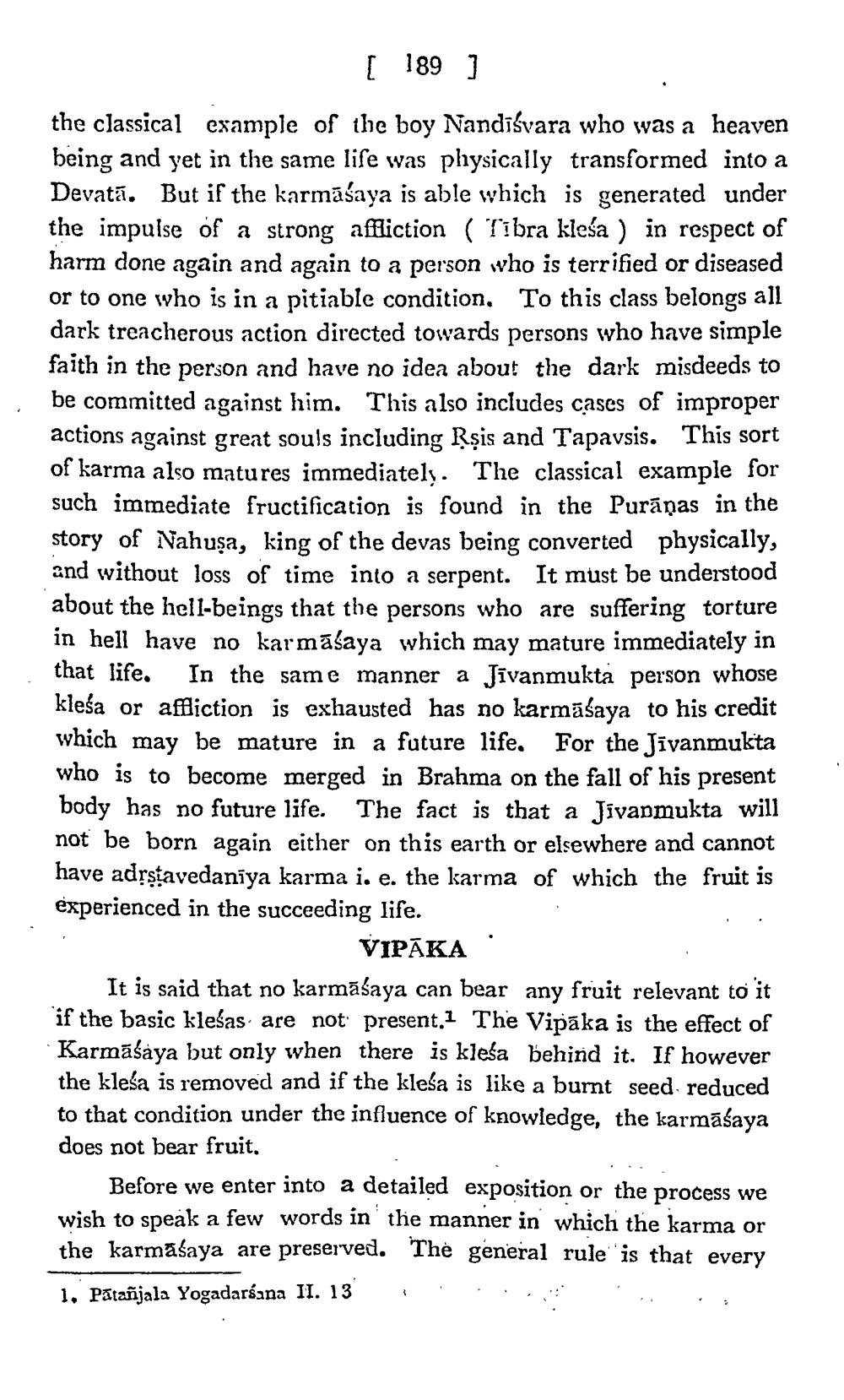________________
[ 189 ] the classical example of the boy Nandiśvara who was a heaven being and yet in the same life was plıysically transformed into a Devatā. But if the karmāśaya is able which is generated under the impulse of a strong affliction ( Tibra kleśa ) in respect of harm done again and again to a person who is terrified or diseased or to one who is in a pitiable condition. To this class belongs all dark treacherous action directed towards persons who have simple faith in the person and have no idea about the dark misdeeds to be committed against him. This also includes cases of improper actions against great souls including Rşis and Tapavsis. This sort of karma also matures immediately. The classical example for such immediate fructification is found in the Purāṇas in the story of Nahuşa, king of the devas being converted physically, and without loss of time into a serpent. It must be understood about the hell-beings that the persons who are suffering torture in hell have no karmāśaya which may mature immediately in that life. In the same manner a Jivanmukta person whose kleśa or affliction is exhausted has no karmāśaya to his credit which may be mature in a future life. For the Jivanmukta who is to become merged in Brahma on the fall of his present body has no future life. The fact is that a Jivanmukta will not be born again either on this earth or elsewhere and cannot have adsstavedaniya karma i. e. the karma of which the fruit is experienced in the succeeding life.
VIPĀKA. It is said that no karmāśaya can bear any fruit relevant to it if the basic klešas are not present.1 The Vipāka is the effect of Karmāśaya but only when there is kleśa behind it. If however the kleśa is removed and if the kleša is like a burnt seed reduced to that condition under the influence of knowledge, the karmāśaya does not bear fruit.
Before we enter into a detailed exposition or the process we wish to speak a few words in the manner in which the karma or the karmaśaya are preserved. The general rule is that every 1, Patañjala Yogadarśana II. 13 . . ....




